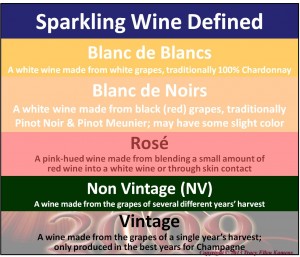Once upon a time (aka earlier this month), I traveled to Seattle, which was initially founded with a settlement called New York-Alki, located across Elliott Bay from the present-day city. Established back in 1851, the settlement’s name meant “New York-in a little while,” supposedly for the site’s resemblance to Manhattan island, but also perhaps some wishful thinking on the part of the settlers?
While the early families were lured by land grants given to them by the U.S. government to protect the U.S. from Canada, I was drawn by the opportunity to catch up with friends and colleagues who were in town for the Society of Wine Educators’ annual conference. Although admittedly, my only official conference attendance was at a reception at the Chihuly Garden and Glass exhibit at Seattle Center.
For the remainder of my visit, I played the role of tourist making sure to hit all of the top spots – the Space Needle, Pike Market and the Underground Tour. This latter attraction proved to be among the highlights of my trip despite its lack of a connection to wine.*
Created by Bill Speidel in 1965 as part of his efforts to save the historic neighborhood of Pioneer Square, the tour takes tourists on an adventure one story below Seattle’s streets, Strewn with ancient artifacts (frescoes, building facades and an original Crapper toilet) and more modern detritus (movie props left behinds from the 1970s), the journey is truly a walk back through time.
But, the environment itself would fall flat if it wasn’t for the guides who regale participants with well-rehearsed stories, punctuated by well-timed humor. Suddenly, the cast of characters are brought to life and history is exciting instead of boring.
For example, early resident (and madam) Lou Graham was among those responsible for an intriguing discovery during one of the city’s first censuses. The study revealed that loggers, who accounted for the vast majority of workers in Seattle at the time, made any average of $20/month. Meanwhile, members of the seamstress circle were bringing home $400/month; not bad for a town with limited need for bespoke garments and haberdashery. The astute city council saw their opportunity and levied a $10/week tax for all 2,700 seamstresses on their non-existent sewing machines.
The 1.5 hours flew by rather quickly, bringing the tour to an end, but my interest in Seattle history was piqued and the stories remained fresh in my mind even a week later.
Stories engage us, fascinate us and challenge us much more than simple facts and figures. Yet, when we talk about wine, how frequently do we find ourselves speaking about varietal percentages, acidity levels and types of oak trees.
Instead, isn’t it more interesting to know that Chateau de Villambis in Bordeaux operates its vineyard under a Help Center for Work permitting them to offer work to people with disabilities or that Mas Blanch I Jove in Catalonia supports the arts by commissioning a new sculpture for its vineyard each year?
Just something to consider the next time you teach wine or any other subject for that matter.
*If you take the more adult-themed tour at night (when it is renamed the Underworld Tour), the ticket price includes one cocktail.


 the forest. After walking for awhile, she came upon a house. She knocked and, when no one answered, she walked right in.
the forest. After walking for awhile, she came upon a house. She knocked and, when no one answered, she walked right in.

